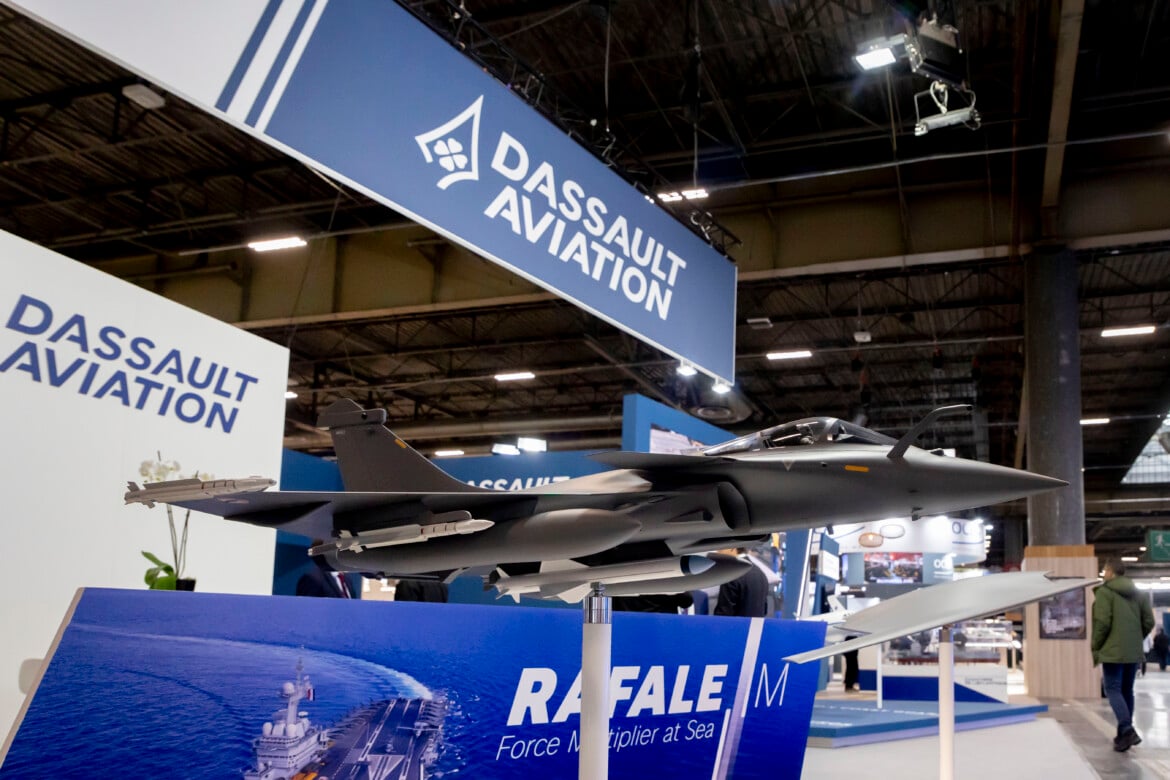Analysis
Report: Europe’s rearmament began long before Trump, under the center-left
The data from SIPRI highlights that a rearmament process had already started before the war in Ukraine increased its scale to enormous levels, and until now it has been dependent on U.S. supply, while the resounding about-face of the new U.S. president Trump will force Europe to spend much more to manage to be less dependent on U.S. arms supplies.

The rearmament of Europe was not invented by Ursula von der Leyen, nor by any of her valiant imitators frantically engaged in summits and meetings to come up with a figure to be purloined from national budgets and invested in military spending. Nor did Donald Trump invent it either, although he is an extraordinary accelerant.
Europe has been engaged in rearmament for at least five years – and has been doing so with U.S.-made weapons. Almost two-thirds of the weapons imported by European NATO countries in the past five years were made in the United States. Weapons imports by European countries more than doubled from 2020 to 2024 compared to the previous five years, and 64 percent came from the U.S., up from 52 percent in the previous five-year period.
The data has been published in the new report on the global war trade released this month by the Stockholm International Peace Research Institute (SIPRI), the most authoritative war market watchdog on the planet, with its carefully researched Yearbook being a primary working tool for anyone dealing with the subject. SIPRI, which was founded in Sweden in 1966 to celebrate the country's 150 years of uninterrupted peace and has become the world's best aggregator of weapons data and analysis, offers us a snapshot of the military spirit of the times, while Sweden itself has chosen to go another route, the proud 32nd member of NATO since exactly one year ago.
The data from SIPRI highlights that a rearmament process had already started before the war in Ukraine increased its scale to enormous levels, and until now it has been dependent on U.S. supply, while the resounding about-face of the new U.S. president Trump will force Europe to spend much more to manage to be less dependent on U.S. arms supplies. And there is a big question mark hanging above that prospect: dependence on U.S. supplies would be the best guarantee that Trump will not remove the United States from that Atlantic pact signed eighty years ago and now changed from an intangible political alliance to a highly negotiable economic relationship.
Over the period analyzed by SIPRI, Ukraine understandably became the world's largest importer of arms, buying nearly a hundred times more than in the previous five-year period and getting 8.8 percent of all arms imports worldwide (a little above India, Qatar and Saudi Arabia). During the same period, European imports increased by 155 percent, with at least 35 states, mostly European, giving arms to Kyiv after Russia invaded. The United States has increased its share of global military contracts and is now at 43%. Russia, on the other hand, has seen its war exports fall by 64%, since it is using the weapons it manufactures and less is left over for export.
It is true that the total amount of weapons bought and sold has only marginally increased over the five-year period. Instead, it is the buyers who have changed, a lot. And to some extent, so has the ranking of those who buy and those who sell: while the names of the top ten seller countries have remained the same, Italy has climbed the rankings from tenth to sixth place overall, with a rise in exports of 138 percent – the largest increase among the top ten global producers – that had already put the wind in the sails of the domestic arms industry before Trump and RearmEurope would do so even more.
“Exports have increased,” Giorgio Beretta points out, an analyst at the Permanent Observatory for Light Weapons (OPAL), ”but the increase shown by SIPRI records final deliveries and depends on orders and authorizations issued during the Renzi and Gentiloni governments, when they hit their all-time highs.”
So what the numbers from SIPRI are showing is center-left war production, buoyed by sales to various petrostates such as Saudi Arabia and the Emirates. We will have to wait some time to be able to assess the increase with the right in power, although stock market data are painting a pretty clear picture: the new European bellicose turn has sent the German Rheinmetall (+114% just in 2024), Italian Leonardo (+73%) and Fincantieri (+60%), Swedish Saab (+53%), German Hensoldt (+41%), British Quinetiq (+34%) and all others in the sector soaring.
What will the future bring? One can hazard a guess from the table published by SIPRI of orders already signed. With 996 aircraft, 342 helicopter gunships, 7 warships, 41 surface-to-air missile systems and 403 tanks, the United States will remain the world's leading arms supplier, with a massive lead. Very far behind is France with 214 fighters and no less than 22 warships, Germany with 454 tanks, and Italy with 1,865 “other armored vehicles.” But now, the €800 billion from RearmEU are also joining the party.
Originally published at https://ilmanifesto.it/leuropa-ha-gia-riarmato-e-sono-armi-made-in-usa on 2025-03-11
